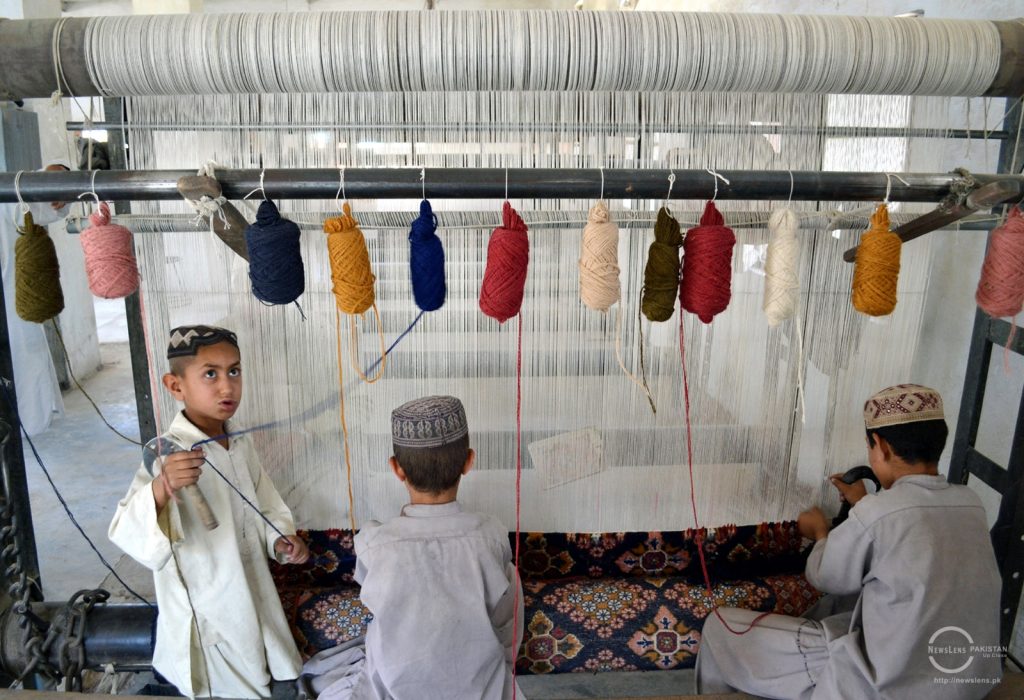
Quetta: On a typical manic afternoon on Quetta’s busy Sariab Road, Khalil Ahmed struggles to keep up with the surge in lunch orders in the restaurant where he works. Even though there are two other child waiters helping in the busy restaurant that serves tea and meals, Ahmad, 9, moves swiftly between customers inside the hall and out where tables are placed in the open by the road, cups and plates piled precariously on grimy palms, to deliver orders.
Later, when the crowd of customers recede to casual tea-drinkers and Ahmad can have a moment of rest, he sits on the concrete pedestal outside the restaurant.
Ask him what he would rather do and Ahmad says in an ideal world he would be an officer. What sort of officer? He shrugs. “An officer with a car and an office,” he says, staring emptily at the droning, indifferent flood of men and machine.
Ahmed never went to school. His parents never let him join, he says, because for a poor family like his, it was never an option. The restaurant pays his Rs 1200 a month. On Fridays, he gets Rs 50 extra as a bonus.
“I want to join school but i have to work all day from 9 am to 9 pm, 7 days a week,” mumbles a quiet Ahmad. “I have no choice but to work in the restaurant.”
There are thousands of children labour working in various business enterprises, auto-mechanic workshops and shopping malls in Quetta where according to Society for Empowering Human Resources (SEHER), a non-government organization working on child rights in Quetta, more than 10,000 children are working as labour. Of these, 60 percent are scavengers, says Hafiz Rehmatullah, a programme officer at SEHER.
While credible figures are hard to come by in a non-documented society like Balochistan’s – Pakistan’s largest province with smallest population – SEHER says the number of child labour in the province is close to 30,000.
“They mostly work in brick-kilns, coal mines, restaurants, the agriculture sector, chromite mines and as scavengers,” says Rehmatullah.
After the 18th Amendment to the Constitution, child labour has become a provincial subject. However, the province has yet to pass a legislation banning child labour. A Child Labour Amendment Bill 2014, currently under consultation at the provincial level, has yet to see the light of day.
Not so far from here at the Saryab Road is the Ghai Khan Chowk where Muhammad Nasir works at the Raftar Auto Workshop. Nasir is only 5. The little one joined the workshop two weeks ago. He goes around, shadowing the older, more experienced hands at the workshop like a dedicated disciple, eager to learn, to obey.
“I don’t like going to school,” said Nasir, with the characteristic innocence of children. “I like working here at the workshop. My parents don’t care whether i work at the auto-mechanic shop or go to school.”
The Labour Department at Quetta has labour inspectors that, according to labour authorities, carry out investigations on regular basis to report instances of child labour. If an owner of an enterprise is found guilty of employing children, he is served a notice and summoned to the labour court.
“There is a special labour court where such cases are taken up and individuals involved in them are punished,” said Sameer Nisar, an Assistant Director at the Labour Department Balochistan, who has been working on child labour in Balochistan for 3 years now.
Nisar said that the definition of “juvenile” was contested in many ordinances, however, generally a child under the age of 14 was considered a juvenile and if found engaging in labour, was reported.
He said that child labour was not only a violation of child labour laws in the country but also a gross human rights violation as the children working in the various enterprises were highly underpaid.
Nisar said that the fact that there was no comprehensive rehabilitation programme, the Labour Department responsibility to reports instances of child labour didn’t improve the situation.
“The parents approach us and request us to let their children work as the had assumed the role of breadwinner for the family,” said Sameer.
The government in Balochistan that aspires to universal education for children has allocated 24 percent of its budget to child education. Article 25(A) of the constitution requires the government to provide free and compulsory education to children between the age of 5 to 16.
Moreover, Clause 2 of the United Nations Millennium Development Goals (MDGs) seeks universal primary education for all children. Pakistan, a signatory to MDGs, hasn’t achieved that goal by the deadline – 2015.
Pakistan is also a signatory to the international Convention on the Rights of the Child. Pakistan ratified the Convention on the Rights of the Child (CRC) on December 12, 1990, while the convention itself was adopted by UN General Assembly on December 2, 1990.
According to Dr. Ruqia Hashmi, a member of the Provincial Assembly Balochistan, child labour was alarming in a poor province like Balochistan where more and more children resorted to physical and manual labour due to poverty and lack of education facilities.
Asked about legislation on child labour in the province, she said that the previous government had passed a bill but it hadn’t been implemented yet.
She said the female members of Balochistan Assembly had formed a group that would work to prevent and end child labour. She said that the group is called the Women Parliamentarians Vocal Group.
Hashmi said the women parliamentarians had taken up the initiative to work against child labour because as mothers, they could better appreciate and value of the life of children and their pain.
The owners of the restaurant on Sariab Road and the auto-mechanic workshop told News Lens that they did not have any information about child protection laws and the government’s commitment to it.



